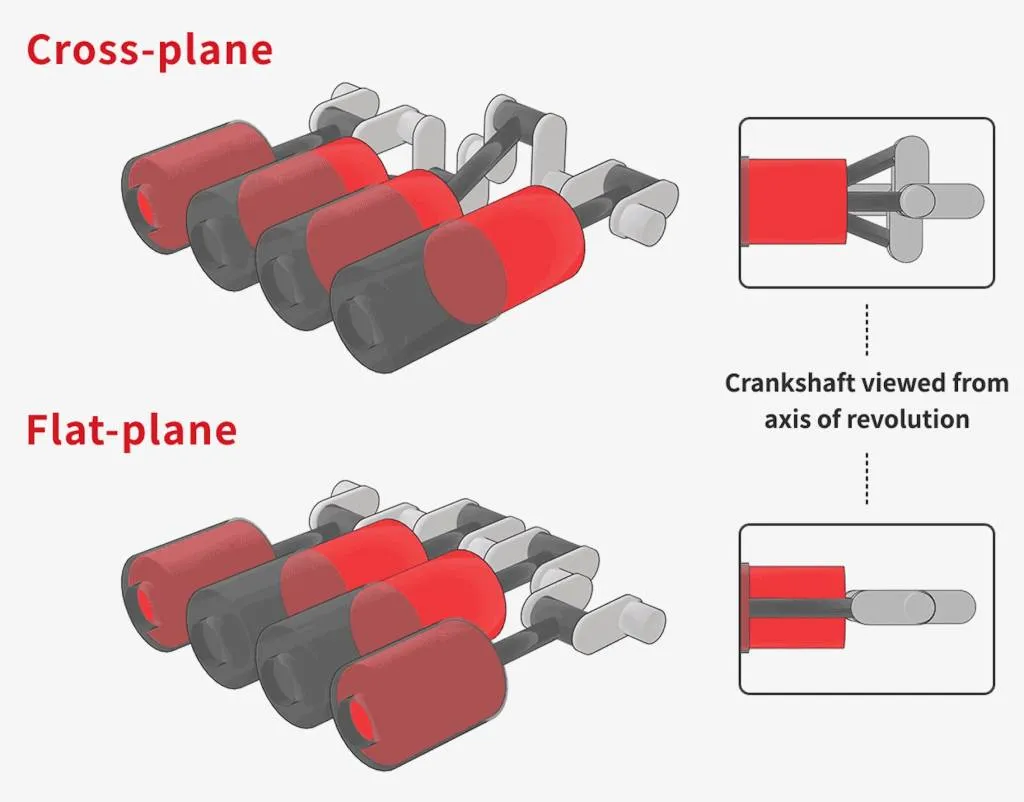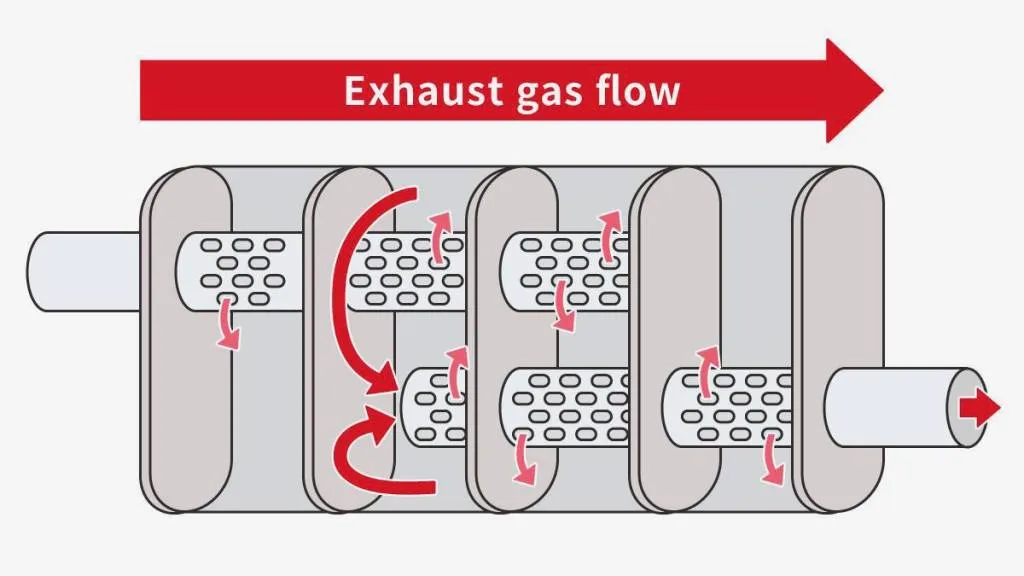An exhaust note helps give a cars its personality, and what that personality is has a lot to do to the type of engine it has. Toyota has released a helpful explainer on why that is.
It starts with the number of cylinders—the more the better. The combustion stroke is what generates sound and, in a typical four-stroke engine, that happens once every two crankshaft revolutions.
The more cylinders an engine has, the more frequently a cylinder is on its combustion stroke. That means the sound is being generated more consistently, making it smoother and fuller to the ear.
Cylinder configuration also plays a role. Inline-6 and V-12 engines are perfectly balanced because their cylinders move in pairs, canceling out vertical and horizontal vibrations. The lack of vibration makes for a more pleasant driving experience, but these engines also have an advantage when it comes to sound.

Flat-plane vs. cross-plane crankshafts (via Toyota)
The even-numbered banks of cylinders in V-12 and inline-6 engines make it easier to design exhaust systems for maximum aural effect without concern that exhaust gases from different cylinders will interfere with each other. Inline-6 engines also don't need the balance shafts of V-6 engines to reduce vibration, which cuts down on mechanical noise.
V-8 engines can produce great sound as well, but the exact tune depends on their configuration. The stereotypical rumble of muscle cars and NASCAR stock cars is produced by a cross-plane crankshaft. In this more common configuration, uneven firing impulses cause exhaust gases to move in a choppy manner, creating that distinct sound. Flat-plane crank V-8s—like the ones used in the C8 Chevrolet Corvette ZR1 and Z06—move their exhaust gases more smoothly, resulting in a higher-pitched sound.
These are just the sounds of naturally aspirated engines. Turbochargers add a bit of hissing and whistling to the soundtrack, which is associated with air moving in and out of their turbines depending on throttle input.

Diagram of a muffler (via Toyota)
Road cars are also generally required to have mufflers, which use a series of chambers to slow down the exhaust gases and absorb some of the sound. As Toyota notes, these chambers can also be designed to alter the quality of the sound beyond just volume, giving engineers an opportunity to make cars sound better.
A good exhaust note is partly why Toyota is looking for ways to continue making combustion engines in the face of stricter emissions rules that are nudging the auto industry toward EVs.
The automaker is partnering with Subaru and Mazda to achieve carbon neutrality with combustion engines by further increasing fuel efficiency, as well as looking at carbon-neutral alternatives to gasoline such as synthetic fuels and hydrogen.